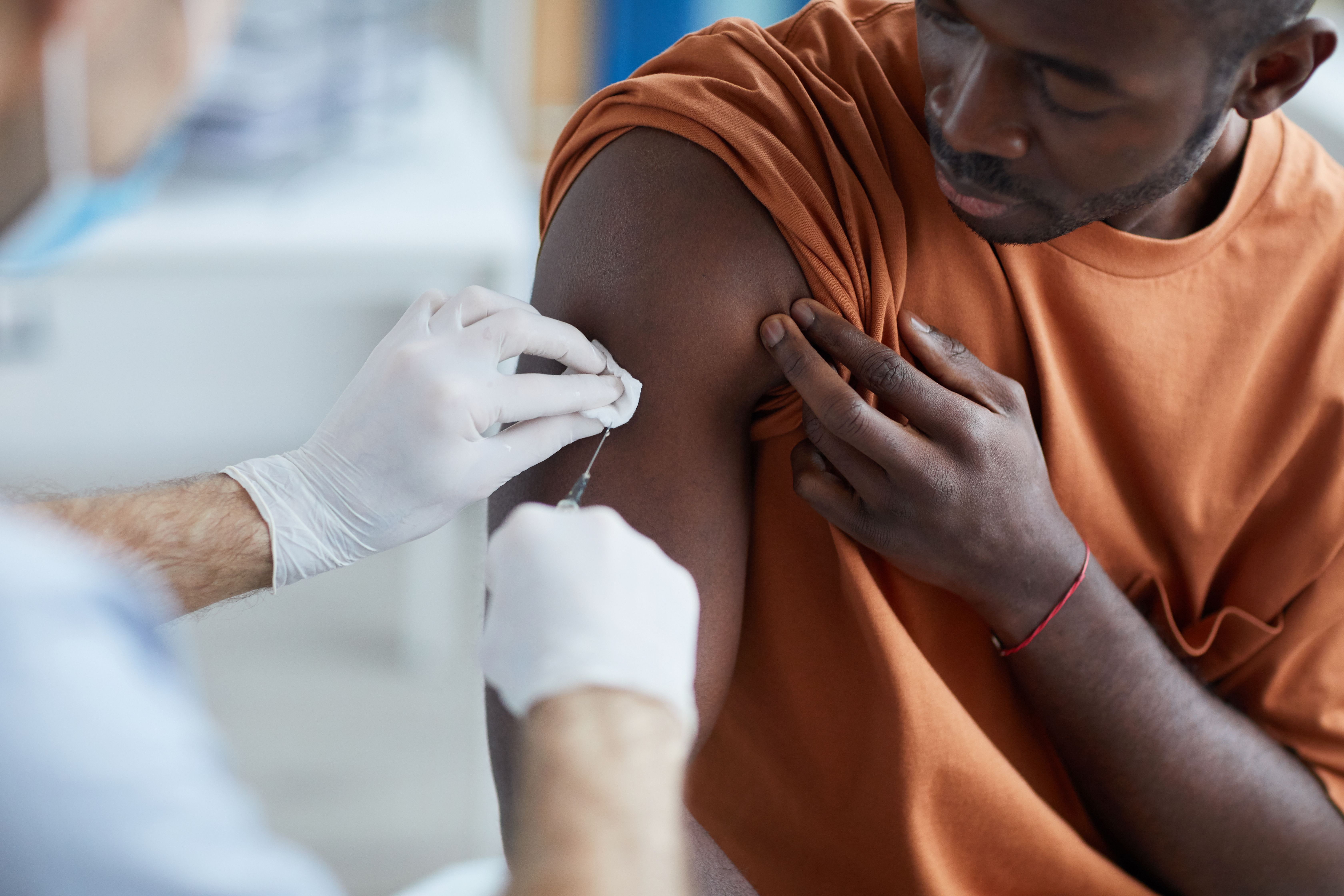- Center on Health Equity & Access
- Clinical
- Health Care Cost
- Health Care Delivery
- Insurance
- Policy
- Technology
- Value-Based Care
COVID-19 Vaccination Rates Far Lower in Patients With SCD Compared With General Population
A state-wide analysis draws attention to the fact individuals with sickle cell disease (SCD) completed a vaccination against COVID-19 at nearly half the rate of individuals without SCD.
Rates of COVID-19 vaccination completion are almost twice as low in patients with sickle cell disease (SCD) compared with patients without SCD in the state of Michigan, according to a recent study published in JAMA Network Open.
Doctor Administering COVID-19 Vaccine | image credit: Seventyfour - stock.adobe.com

Patients with SCD are more vulnerable to hospitalization due, in part, to SCD’s impact on the spleen, which filters infections in the blood and is a crucial organ for the immune system. The abnormal, sickle-shaped blood cells of SCD are stiff, sticky, and more vulnerable to getting stuck in blood vessels—effectively blocking vessels and impeding the flow of otherwise healthy, oxygen-carrying blood cells. Furthermore, in the spleen’s filtration a sickle-shaped cell can be destroyed. This reduction in healthy, circulating red blood cells leaves affected individuals more prone to infections.2
The authors of the present study noted that studies concerning vaccination rates in patients with SCD are fairly limited. As the COVID-19 vaccine is known to lessen the risks of developing a severe infection, researchers conducted a study to investigate and compare the vaccination rates between individuals with SCD and those without throughout the state of Michigan.1
COVID-19 vaccination data were gathered from the Michigan Care Improvement Registry (MCIR) for residents aged 5 years and older as of August 1, 2022. The Michigan Sickle Cell Data Collection (MiSCDC) program was used to identify residents with SCD and calculate the amount of residents, with and without SCD, who finished at least 2 doses of mRNA-1273 (Moderna) or BNT162b2 (Pfizer/BioNTech), 1 dose of Ad26.COV2.S (Janssen), or a different COVID-19 vaccine.
Results found a total of 3424 individuals with SCD and 9,416,991 without SCD. Overall, 33.5% of those with SCD completed their COVID-19 immunization compared with over 61% of individuals without SCD. These rates increased with age in both groups (range in SCD group: 17%-74%; range in non-SCD group: 25%-87%).
The authors detailed the relative risks according to age group. For those aged 5 to 11 years the relative risk was 0.68 (95% CI, 0.55-0.84), for 12-17 years it was 0.75 (95% CI, 0.64-0.87), for 18-64 years it was 0.58 (95% CI, 0.55-0.61), and for those 65 and older it was 0.84 (95% CI, 0.75-0.94). These age-related associations between immunization completion and SCD status were statistically significant (RR, 0.68 vs 0.75 vs 0.58 vs 0.84; P < .001).
Among the listed limitations encountered in this study, the authors cited the exclusion of non-Michigan residents, the potentially stunted immunization rates in younger children (as the study period began shortly after vaccines were approved for ages 5-12 years), and rules around immunization scheduling.
The results draw attention to the comparatively low rates of COVID-19 immunization in patients with SCD. In the consideration of further studies, the authors conclude by highlighting the need to consider and gather data on vaccination perspectives in the SCD population and their caregivers. Compiling more information around this subject could inform intervention strategies that hopefully elevate vaccination rates in this high-risk population and minimize the risks of morbidity or mortality related to COVID-19.
REFERENCES
1. Peng HK, Dombkowski KJ, Plegue MA, et al. COVID-19 immunization coverage among people with sickle cell disease. JAMA Netw Open. 2024 Jan 2;7(1):e2351618. doi: 10.1001/jamanetworkopen.2023.51618
2. What is sickle cell disease?. Johns Hopkins Medicine. Accessed February 2, 2024. https://www.hopkinsmedicine.org/health/conditions-and-diseases/sickle-cell-disease
